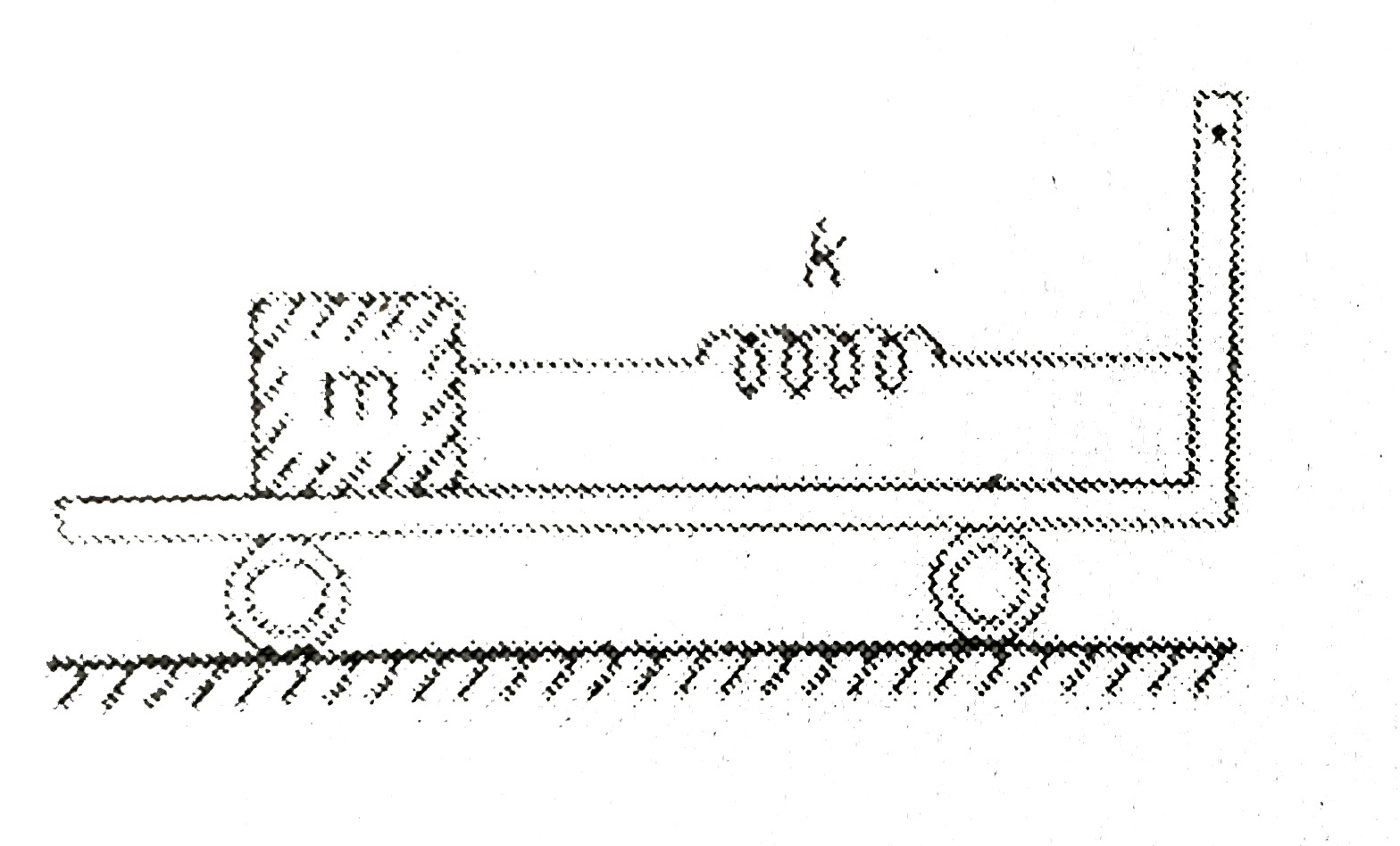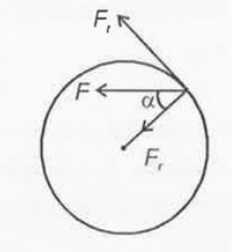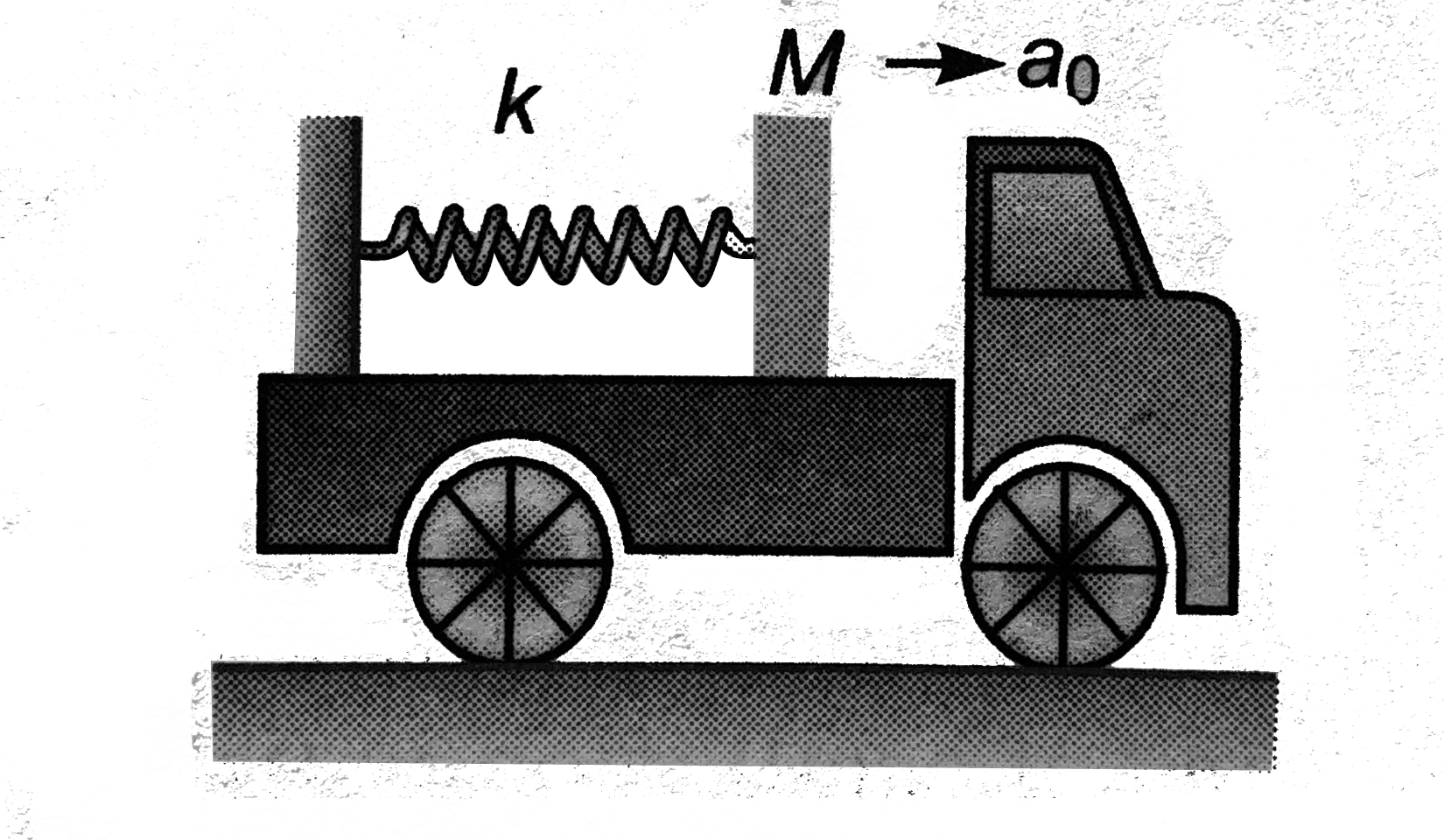A truck of mass M is moved under a force F. If the truck is then loaded with an object equal to the mass of the truck and the driving force is halved, then how does the acceleration change?
To solve the problem step by step, we will use Newton's second law of motion, which states that Force (F) is equal to mass (m) multiplied by acceleration (a), or F=ma.
Step 1: Identify Initial Conditions
- Let the mass of the truck be M.
- The initial force applied to the truck is F.
- According to Newton's second law, the initial acceleration a1 can be expressed as:
a1=FM
Step 2: Identify New Conditions After Loading
- The truck is loaded with an object equal to its mass, so the new mass m2 becomes:
m2=M+M=2M
- The driving force is then halved, so the new force F2 is:
F2=F2
Step 3: Calculate New Acceleration
- Using Newton's second law again for the new conditions, the new acceleration a2 can be expressed as:
a2=F2m2=F22M=F4M
Step 4: Compare the Accelerations
- Now, we can compare the initial acceleration a1 and the new acceleration a2:
a1=FM
a2=F4M
Step 5: Find the Ratio of Accelerations
- To find how the acceleration changes, we can take the ratio of a2 to a1:
a2a1=F4MFM=14
- This means that:
a2=14a1
Conclusion
The new acceleration a2 is one-fourth of the initial acceleration a1.
---
- Let the mass of the truck be M.
- The initial force applied to the truck is F.
- According to Newton's second law, the initial acceleration a1 can be expressed as:
a1=FM
- The truck is loaded with an object equal to its mass, so the new mass m2 becomes:
m2=M+M=2M
- The driving force is then halved, so the new force F2 is:
F2=F2
- Using Newton's second law again for the new conditions, the new acceleration a2 can be expressed as:
a2=F2m2=F22M=F4M
- Now, we can compare the initial acceleration a1 and the new acceleration a2:
a1=FM
a2=F4M
- To find how the acceleration changes, we can take the ratio of a2 to a1:
a2a1=F4MFM=14
- This means that:
a2=14a1
The new acceleration a2 is one-fourth of the initial acceleration a1.
Topper's Solved these Questions
- BOOK - NCERT EXEMPLAR ENGLISHCHAPTER - FORCE AND LAW OF MOTIONEXERCISE - LONG ANSWER3videos
FORCE AND LAW OF MOTION
- BOOK - NCERT EXEMPLAR ENGLISHCHAPTER - FORCE AND LAW OF MOTIONEXERCISE - LONG ANSWER3videos
FORCE AND LAW OF MOTION
- BOOK - NCERT EXEMPLAR ENGLISHCHAPTER - GRAVITATIONEXERCISE - LONG ANSWER TYPE QUESTIONS4videos
GRAVITATION
Similar Questions
Knowledge Check
- Question 1 - Select One
A block of mass 1 kg lies on a horizontal surface in a truck. The coefficient of static friction between the block and the surface is 0.6. If the acceleration of the truck is 5m/s2, the frictional force acting on the block is…………newtons.
A10NB5NC2.5ND20N
A block of mass m is attached to a massless spring of force constant k, the other end of which is fixed from the wall of a truck as shown in figure. The block is placed over a smooth surface and initially the spring is unstretched. Suddenly the truck starts moving towards right with a constant accleration a0. As seen from the truck
 View Solution
View SolutionA particle of mass m is moving in a circle of radius (r) with changing speed (v) the direction of centripetal force and tangential force are shown below the value of α is
 View Solution
View SolutionA truck of mass 10 metric ton runs at 3ms−1 along a level track and collides with a loaded truck of mass 20 metric ton, standing at rest. If the trucks couple together , the common speed after the collision is
View SolutionA block of mass 1 kg lies on a horizontal surface in a truck. The coefficient of static friction between the block and the surface is 0.6. If the acceleration of the truck is 5m/s2, the frictional force acting on the block is…………newtons.
View SolutionA block of mass 1kg is kept on smooth floor of a truck. One end of a spring of force constant 100N/m is attached to the block and other end is attached to the body of truck as shown in the figure. At t=0, truck begins to move with constant acceleration 2m/s2. The amplitude of oscillation of block relative to the floor of truck is
 View Solution
View SolutionA block of mass 1kg lies on a horizontal surface in a truck. The coefficeint of friction between the block and surface is 0.5. If the acceleration of the truck is 6ms−2 the acceleration of the block relative to ground is
View SolutionTwo thin circular disks of mass 2kg and radius 10 cm each are joined by a rigid massless rod of length 20 cm. the axis of the rod is along the perpendicular to the planes of the disk through their centres. This object is kept on a truck in such a way that the axis of the object is horizontal and perpendicular to the direction of the motion of the truck. Its friction with the floor of the truck is large enough so that the object can roll on the truck without slipping. Take x axis as the direction of motion of the truck and z-axis as the vertically upwards direction. if the truck has an acceleration of 9m/s2 Calculate:
(i) The force fo friction on each disk,
(ii) The magnitude and the direction of the frictional torque acting on each disk about the centre of mass O of the object. Express the torque in the vector form in terms of unit vectors ˆi,ˆjandˆk in the x,y, and z directions.
 View Solution
View Solution
